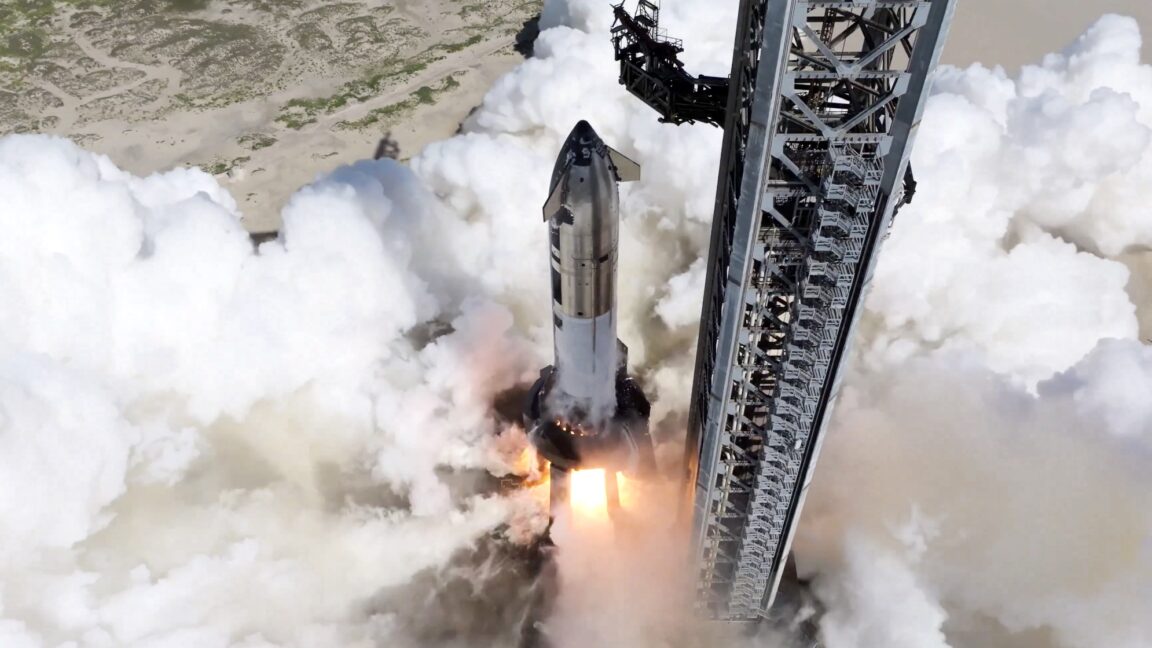Engineers recreated the diffuser failure on the ground during the investigation, and then redesigned the part to better direct pressurized gas into the main fuel tank. This will also “substantially decrease” strain on the diffuser structure, SpaceX said.
The FAA, charged with ensuring commercial rocket launches don’t endanger public safety, signed off on the investigation and gave the green light for SpaceX to fly Starship again when it is ready.
“SpaceX can now proceed with Starship Flight 10 launch operations under its current license,” the FAA said.
“The upcoming flight will continue to expand the operating envelope on the Super Heavy booster, with multiple landing burn tests planned,” SpaceX said in an update posted to its website Friday. “It will also target similar objectives as previous missions, including Starship’s first payload deployment and multiple reentry experiments geared towards returning the upper stage to the launch site for catch.”
File photo of Starship’s six Raptor engines firing on a test stand in South Texas.
Credit:
SpaceX
In the aftermath of the test flight in May, SpaceX hoped to fly Starship again by late June or early July. But another accident June 18, this time on the ground, delayed the program another couple of months. The Starship vehicle SpaceX assigned to the next flight, designated Ship 36, exploded on a test stand in Texas as teams filled it with cryogenic propellants for an engine test-firing.
The accident destroyed the ship and damaged the test site, prompting SpaceX to retrofit the sole active Starship launch pad to support testing of the next ship in line—Ship 37. Those tests included a brief firing of all six of the ship’s Raptor engines August 1.
After Ship 37’s final spin prime test Wednesday, workers transported the rocket back to a hangar for evaluation, and crews immediately got to work transitioning the launch pad back to its normal configuration to host a full Super Heavy/Starship stack.
SpaceX said the explosion on the test stand in June was likely caused by damage to a high-pressure nitrogen storage tank inside Starship’s payload bay section. This tank, called a composite overwrapped pressure vessel, or COPV, violently ruptured and led to the ship’s fiery demise. SpaceX said COPVs on upcoming flights will operate at lower pressures, and managers ordered additional inspections on COPVs to look for damage, more proof testing, more stringent acceptance criteria, and a hardware change to address the problem.

